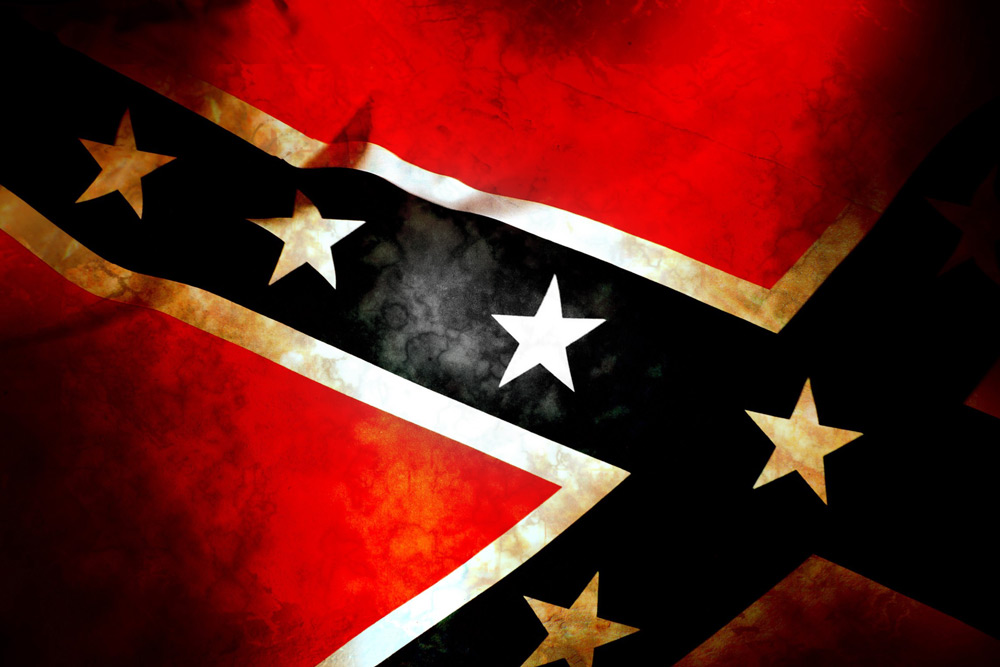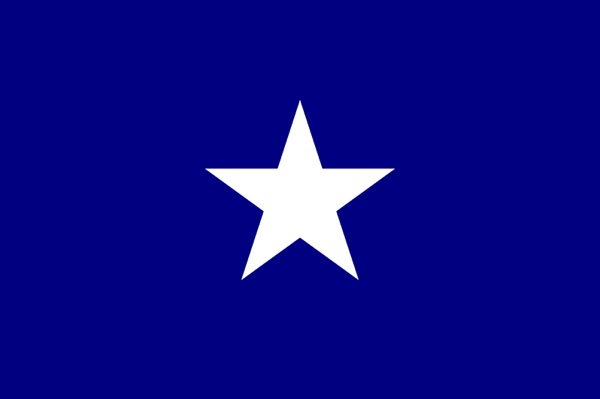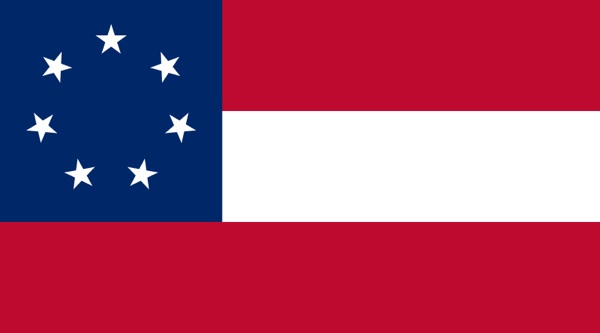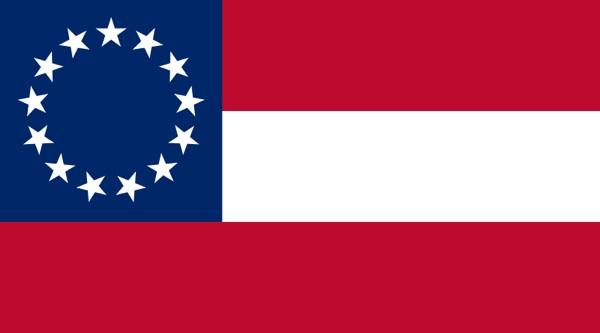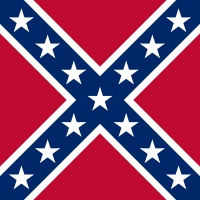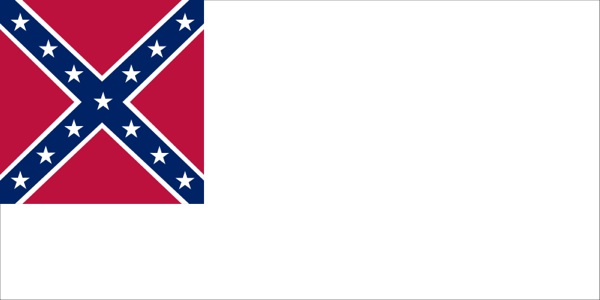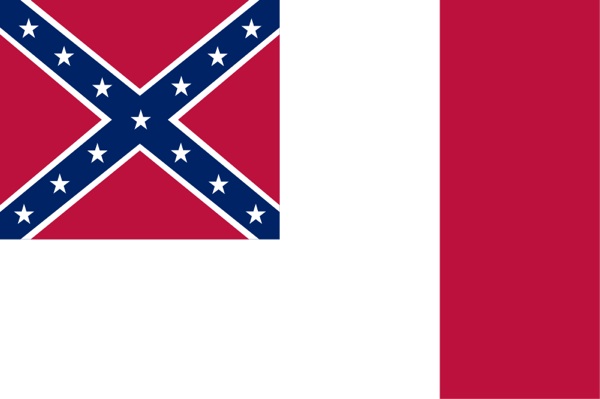Information and Articles About The Confederate Flag, a Civil War Flag from The American Civil War
First Confederate National Flag
The first official Confederate National Flag was based on the U.S. flag. It had a large red bar at the top and one at the bottom, with a broad white bar between. In an upper corner a blue box contained seven stars, for the seven states that constituted the whole of the Confederacy at the time it was designed; eventually, it would have 11 stars, including one each for Kentucky and Missouri though those states never seceded from the Union. Its appearance gave it the nickname “Stars and Bars.” The flag was first used officially at the inauguration of Jefferson Davis on March 4, 1861.
At the First Battle of Manassas (First Battle of Bull Run), Confederate commanders discovered the Stars and Bars bore too similar a resemblance to the Stars and Stripes; when furled, the two were easily confused. This situation nearly led the Southern commander, Brigadier General P.G.T. Beauregard, to order a retreat because he mistakenly thought arriving Confederate reinforcements were Union troops. With these reinforcements, Beauregard won the battle he had almost withdrawn from.
Confederate Battle Flag
Following that incident, Beauregard urged the government to adopt a national flag that could not be mistaken for the U.S. flag on the battlefield. When his proposal was rejected, he recommended having a separate battle flag. The one chosen had a red background crisscrossed by a blue X that contained 13 white stars and was based on a rejected proposal for the Confederacy’s national flag. It was square—48 inches square for the infantry, 36 for the artillery and 30 inches square for the cavalry. It may have been produced in a rectangular shape as well. It was first carried in battle in December 1861, but it was the flag of the Army of Northern Virginia and used more commonly in the Eastern Theater than in the Western, where the first Confederate national flag was used throughout the war. Variations of the battle flag were incorporated into some regimental flags, both East and West, as well.
The battle flag is the most recognized Confederate flag—the most widely recognized of all flags of the Civil War apart from Old Glory—and has become the single most identifiable symbol of the Confederacy. It is often flown by the Ku Klux Klan and other white supremacists, which has made it a controversial and divisive symbol that represents racial oppression to some and Southern heritage to others. Today, it is more likely to be a rectangle than a square.
Second Confederate National Flag
In a way, Beauregard won his argument for a new national flag, albeit belatedly. In the spring of 1863, the Confederate Congress, after much debate, approved a new design. This rectangular flag would be totally white except for a replica of the square battle flag in the upper left corner, descending about three-quarters of the way to the bottom. Called the “Stainless Banner,” it also caused problems. When not fully unfurled, the large area of white gave it the appearance of a flag of truce. This version of the flag draped the casket of Confederate lieutenant general Thomas “Stonewall” Jackson, so it is also sometimes called the “Jackson Flag.”
Third Confederate National Flag
The third and final national flag of the Confederacy was adopted on March 4, 1865, just weeks before the war ended. To eliminate the possibility of the flag being mistaken for a flag of truce or surrender, a broad, vertical red bar was added to the front edge of the second national flag. Because it was adopted when the war was nearly over, this flag saw little use, but it flew over some buildings and Southern ships before the official adoption date.
Related Articles
[cat totalposts=’21’ category=’1271′ excerpt=’true’ order=’desc’ orderby=’post_date’]

